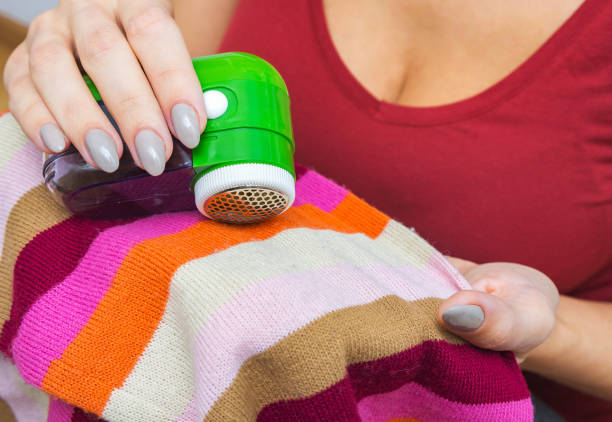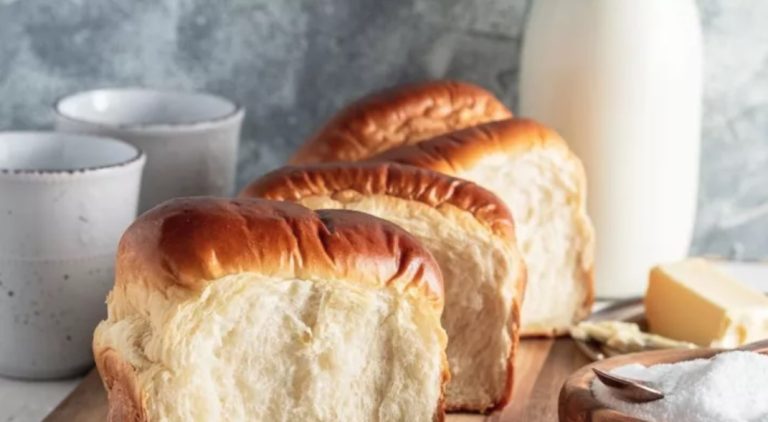Shokupan is a soft Japanese milk bread. It is particularly juicy and resembles fluffy toast. We will show you how to prepare the delicious white bread vegan.
Shokupan (also Japanese milk bread or Tangzhong milk bread) is a popular bread in Japan and is known for its cloud-like texture. It is similar to light toast or French brioche, but is softer and particularly juicy thanks to the special preparation method. Translated, “Shokupan” means something like “eat bread”. The milk bread is used in Japan for sweet and savory sandwiches.
The special thing about Shokupan is that it stays fresh for a long time and retains its moisture. In addition to the high water content in the dough, the main reason for this is the Yudane or Tangzhong method. With this method of preparation, a pre-dough made of flour and hot water is mixed and worked into the dough. This is how the starch gels and can bind more water, giving the bread a fine-pored, moist crumb.
We’ll show you the faster version with the Tangzhong method, in which you prepare a classic piece of cooking. To do this, boil about seven percent of the flour with five times the amount of liquid. The Yudane method is very traditional, in which you prepare a brew with a little more flour (around 20 percent of the flour content) and the same amount of liquid the night before. The result of the two variants is very similar.
Vegan Shokupan: The recipe

You only need a few basic ingredients for the Japanese milk bread. It is best to buy these in organic quality. In this way you support ecological agriculture that is free of chemical-synthetic pesticides. For example, the organic seals from Demeter, Naturland and Bioland are recommended.
Ingredients:
25 g wheat flour (type 550)
60 ml water
60 ml vegetable milk
2 teaspoons dry yeast
180 ml vegetable milk
2 tbsp sugar
375 g wheat flour type 550
1 tsp salt
40 vegan butter
2 tbsp plant-based milk (for brushing)
Directions:
First you prepare the cooking piece. To do this, mix 25 grams of flour with a total of 120 milliliters of liquid (for example, you can use a mixture of 60 milliliters of water and 60 milliliters of plant-based milk). Boil the mixture, stirring constantly, until a thick paste forms. Allow the piece of cooking to cool down completely (preferably in the fridge overnight).
Next, prepare the yeast dough. Mix the dry yeast with the lukewarm plant-based milk, the sugar and the cooking stick. Then add the remaining flour, salt and softened vegan butter and knead for 10 minutes to form a smooth dough. The best way to do this is with the dough hook in a food processor, as the dough is very sticky. But with a little patience, you can also do it with your hands.
Cover and let the dough rise in a warm place for about an hour (or until it has doubled in size). Alternatively, you can let the dough rest in the fridge overnight and let it come to room temperature the next day before processing it further, until the volume has also increased significantly.
On a lightly floured work surface, divide the dough into three parts and roll them out into long, one-inch-thick ovals. Fold in the long sides to create straight edges and roll up the strand starting from the short side.
Grease a loaf tin and place the three rolls in the tin. Cover the dough and let it rise again for about an hour (or until doubled in volume).
Shortly before the end of the rising time, preheat the oven to 180 degrees Celsius top/bottom heat. Brush the dough pieces with plant-based milk and bake the shokupan for around 35 to 40 minutes until golden brown.
After baking, turn the shokupan out of the pan and let it cool on a wire rack before slicing.
Make Shokupan yourself: Tips for the preparation

The right flour: The fluffy consistency of Shokupan is best achieved with type 550 light wheat flour, as this has a higher protein content than classic 405 wheat flour. But conventional light wheat or spelled flour also works. You should not use wholemeal flour for the recipe.
Loaf pan with lid: Shokupan is often baked in Japan in a loaf pan with a lid (also called a Pullman loaf pan or pan de mie pan). This gives the white bread the classic square toast shape and also remains light on the surface.
Adjust the sweetness: If you want the bread to be savory, you can reduce the amount of sugar. How sweet your bread is also depends on the vegan milk, because oat milk is naturally much sweeter than unsweetened soy milk. Alternatively, you can also use coconut blossom sugar or date syrup to sweeten. However, this affects the color and taste of the bread.
Shokupan sandwiches: Shokupan is particularly popular in Japan for its savory and sweet sandwiches, the so-called “sandos”. They are topped with eggs or Japanese schnitzel, for example. If you want to prepare vegetarian Sandos, you will also find recipes for vegan scrambled eggs or vegan schnitzel as a topping on our website. Shokupan is also very suitable for poor knights.






